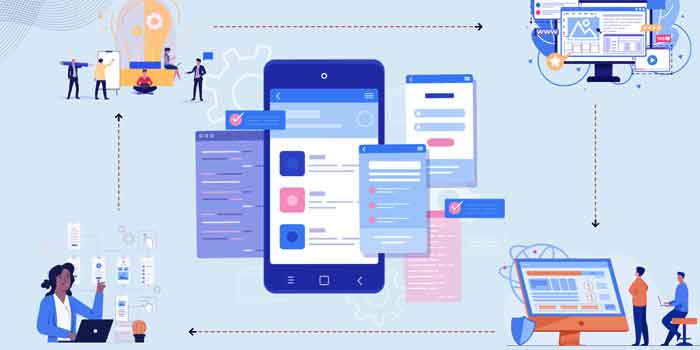Mobile app development is a complex process. There are a number of steps involved in it, and without understanding the theory, entrepreneurs cannot build the right quality product. Also, when you know the development process, you understand the real development better and understand the work of the mobile app development company. So, what are we waiting for? Let us head straight into the pointers explaining the most important steps involved in the mobile app development process.
1) Develop the Idea:
Humans have a tendency to think, and with more thoughts come more ideas. Not every idea is a strong idea that needs action. But, ideas that can generate revenues must be thought of carefully. A mobile app development idea must be clear enough to attain a good amount of satisfaction in your mind. When you decide to build a mobile app, it is time to refine your idea further. Define the target audience of your mobile app. Further, decide if it will be developed on android or iOS.
- What are the resources required to solve the problem of your audience, and to how many degrees can your idea solve it?
- What is going on in the current market for your app?
- Whom are your competitors doing in the same domain?
Once you answer these questions, you will develop your idea to a good extent. You can take the help of rough sketching to create blueprints of your idea. A visual representation always benefits the mind. Finally, you also have to predict monetization. An app can be free of cost, but nobody wants to do business free of cost until you are not building it for NGO purposes.
2) Laying the Real Plan:
Now that you have noted down your idea, it is time to actually perform some research based on the identified elements in your idea. In the actual planning, there are certain elements; although the elements are similar to the ideation, it involves a professional approach. Start by studying your competitors in detail. Check out their apps and study them deeply with every function, functionalities, UI, performance, and overall customer experience. You have to offer more than your competitors. Now that you know about your competition, know what audience they are targeting. You can easily understand it from their social media pages. Check out who is following them and what kind of comments the customers make on their posts. After this, it is time to decide the technical specification of your mobile app. What functionalities will you offer in your mobile app? What will be the unique features that your competitors are not providing? You have to lay down real research in this process. Also, lay down the monetization plan for your mobile app. Will you opt for an advertisement or subscription based revenue model?
3) Let us Design:
The above two steps are the most critical steps because they lay the foundation of the idea. When the foundation is strong, the potential for success increases, now is the time to design your mobile app. The gestures, colors, layout, and UI designs are a few of the components involved in this phase of a mobile app development cycle. Make sure that you design your mobile app by keeping your end users in mind. Once you decide on the design parts, it is time to use wireframing tools. We will advise you to consult with a mobile app development agency at this phase since wireframing requires technical knowledge, and entrepreneurs from a non-technical background will waste time and effort in learning them.
4) Building and Testing Stage:
This is the step where the real mobile app development process starts. Once you finalize the design of the app, it is time to decide on some of the building elements. First, you have to decide if you are going to build it for the android or iOS platform. You can also build the app for both platforms. Once you finalize the same, you have to decide between native apps, web apps, and hybrid apps. Web apps use JavaScript, HTML, and CSS and are lightweight apps costing less. Native apps are designed for specific operating systems giving more power to the apps. Finally, hybrid apps are used to provide a close to the native app experience, and the code used to develop for the iOS platform can be used for the Android platform. It is a good suggestion to consult this phase with an app development agency and start your project. The builds are tested by the QA team for possible bugs and errors.
What is Next?
Once your app is ready, you have to focus on its launch and maintenance. Launching your app is another important element that you should learn about. A bad launch can create issues with the success of your mobile app. Once launched carefully, take care of the maintenance of the mobile app so that you deliver the best of the trends to your users. While deciding on your mobile app development company, ensure few of the important checks. For example, make sure that you go through their website in the first place and notice if it loads without any bugs and a very less time. Further, check the content of the website since content is king. Check how the business is laying down its content and with what expertise. Similarly, go through the social media handles and ensure that the mobile app development company you select is best in class.















Several many thanks for share your blog website right here. JPloft solutions
ReplyDeletehufdj https://www.jploft.com/
ReplyDelete